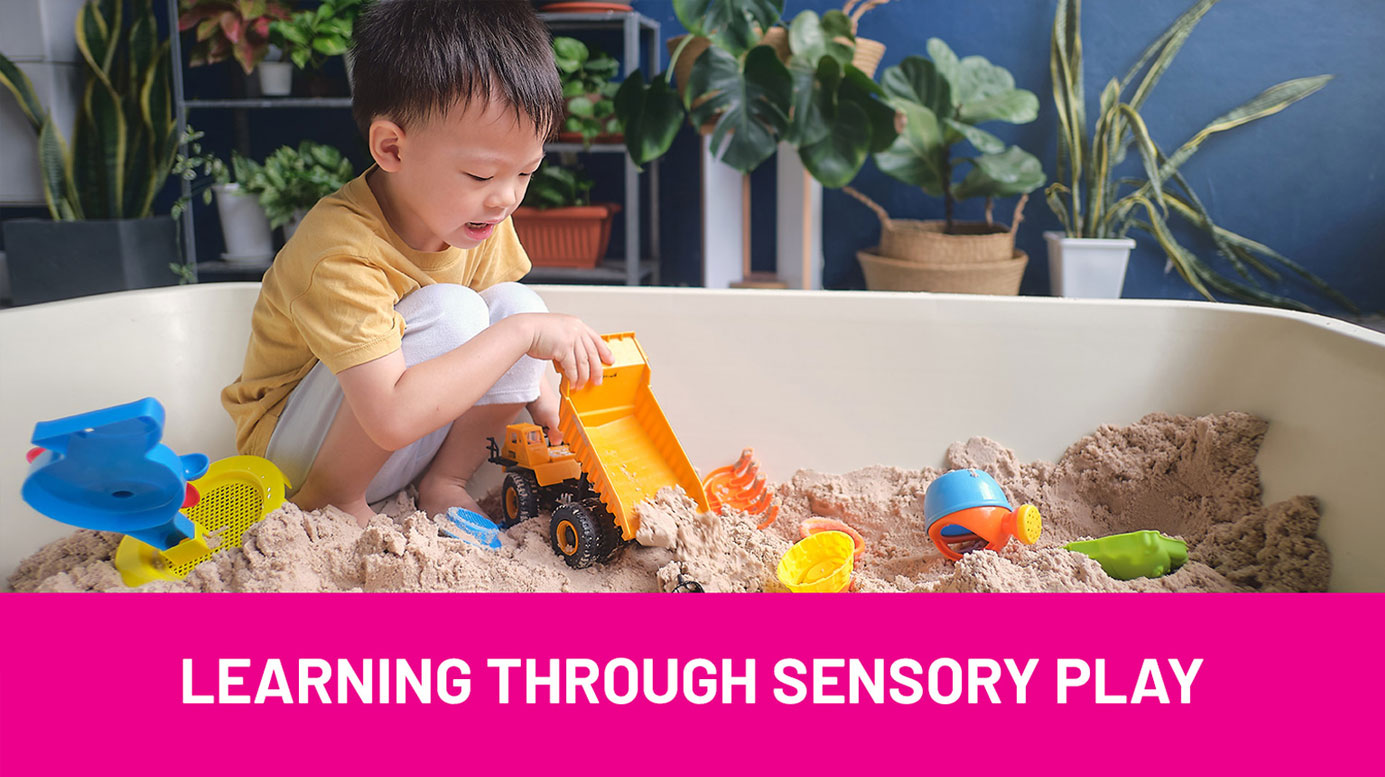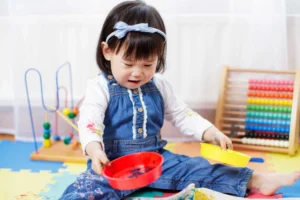Learning Through Sensory Play
![]()
- Posted by abrakadoodle.com.sg
- Categories Kids Art Activities
- Date 30 August 2021

Babies use their senses to learn from the time they are born. Which is one of the reasons why all babies and toddlers, touch everything they can lay their hands on and even put objects into their mouths. It is just another way of examining, discovering and making sense of the world they are growing up in.
Then, there are those amusing instances, when babies make all kinds of funny noises using their lips, or blow bubbles to explore how it sounds and feels. Sometimes these sounds maybe sounding so funny to them that they begin to giggle uncontrollably.
Another example of sensory activity is when a child continues to spin until the spinning make her so dizzy that she loses her and balance and sits down dazed. She immediately get up and does the same thing all over again. Children never seem to tire of experimenting and learning through sensory play.
So try not to discourage when a toddler or a young child is wanting to do something, even if it seems odd. Just stay alert and keep a sharp eye out for not letting a child do something that might cause harm.
Table of Contents
ToggleStimulate all the senses

Whenever you get into a conversation with parents about child activity plans, most of us immediately think of play dough, or sand, or water or a child playing with clay. But sensory play activity is not just about the sense of touch, but involves stimulating all the other senses– sight, smell, hearing, and taste.
Like smelling the sharp scent of vinegar, or a pleasant au de cologne or the tangy smell of spices is a sensory activity. Or even exploring the sense of sight through colour mixing, and watching the amazing effects colours can create.
Such activities are all part of appealing to a child’s senses through play. In fact, the earlier you start involving children in as many sensory art activities as possible, and the better it will be for your child.
Developing motor skills

Sensory play helps a child acquire and develop both, the gross motor skills and the fine motor skills. However, children find it easier to develop the larger muscle groups that control gross motor skills, but face problems developing the smaller muscle groups found in the wrists and fingers.
Here is where sensory art activities can be of great help. They assist these muscles to gain strength, improve control and help make more precise movements. Essential for writing, tying a lace or buttoning a shirt or knotting a tie.
Here are some sensory play activities you can try out at home:

Hide and seek
This is one sensory play activity your child will enjoy. Hide a small object inside a lump of dough. Invite your child to find it by pulling off small pieces of the dough using only her index finger and thumb, Do this until the hidden object is revealed. Show her how to do it once, Hide the object again in the dough and hand it back asking her to find it. By herself.

String a pasta
This sensory play activity calls for stringing large beads on a shoelace or piece of a yarn. Better still, fill a bowl with pasta of different colours and get her to string the pasta and make a necklace or a bracelet for herself. When done, ask her wear it, take a picture and send it to her friends and dad at work.

Use a window as a slate
Take turns to spray a generous amount of your hubby’s shaving cream onto a windowpane.Ask your child to pat it down into a thin layer, and write her name or draw a shape using an index finger. Once done, give her a paper napkin to wipe away the shaving cream in an up and down or side to side motion. Encourage her to use only her arm and wrist and not to move her shoulders.

Handling scissors safely
Use scissors to cut a newspaper into strips or make shapes or make cutouts of people. It really does not matter if her creations don’t come out right or look pretty enough. The objective is help your child learn to hold a scissors correctly, develop a proper grip and be able to control the cutting edge safely.

What’s in a line
Here is another sensory play idea that is fun to do. Take an old newspaper and tape it to a wall or to an easel. Then, using a marker ask your child to draw a line from top to bottom of the paper or draw a shape. Take turns, connecting a different shape or line and see what new image you both can create together. Do this until the entire newspaper spread is filled with your lines. Be creative, use curvy lines and different shape sand different coloured markers. Mix and match your masterpiece.

Calming the nerves
Any sensory play is not just for learning new skills, but is also a great way to soothe the nerves and reduce any stress. It will make your child feel more grounded and regulate internal discomfort. You will never believe how calming sensory play can be until you give it a try!
You may also like

Aims & Objectives Of Art Activities For Preschoolers

Why Fun Outdoor Art Activities Are Important

